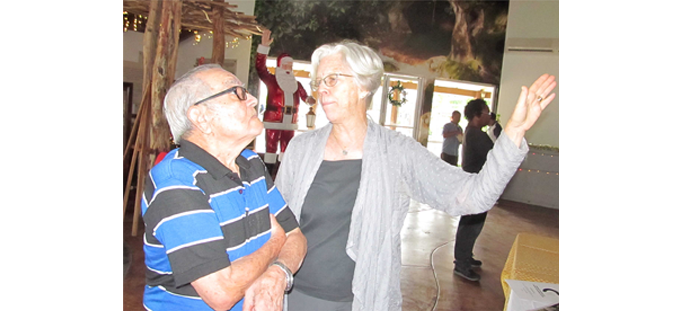Photo: (l-r) Historian Hector Silva and Dr. Anabel Ford explaining the El Pilar monuments
by Orlando Pulido
SANTA ELENA, Cayo District, Thurs. Dec. 7, 2023
Well-known archaeologist Dr. Anabel Ford was recognized on Thursday morning at the Cayo Welcome Center by Earl Trapp, Jr., the Mayor of San Ignacio and Santa Elena. In a short ceremony, Dr. Anabel Ford was awarded for her two decades of work in Belize. The event was organized by the Godsman Celestino Ellis Center for Garifuna Culture (GCE-CFGC) under the auspices of Mayor Earl Trapp.
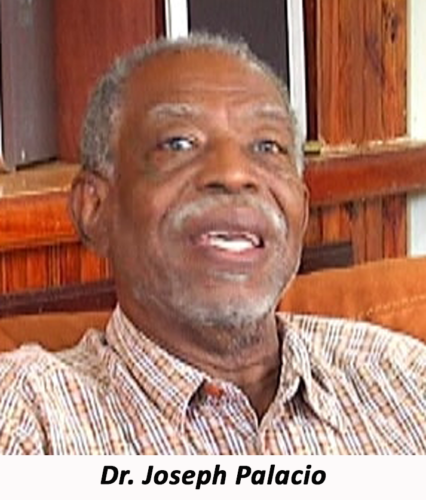
Dr. Joseph Palacio was also recognized by GCE-CFGC in absentia on Thursday. He was given two rounds of applause by the audience on Thursday morning.
In his main speech to the audience Mayor Earl Trapp stated that he was honored to be part of this significant program under his auspices, “as a gesture of support.”
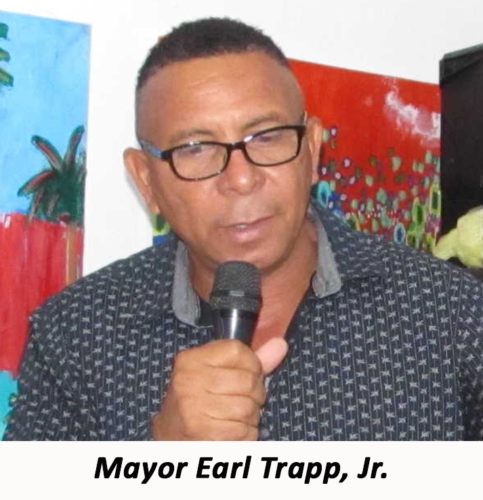
He also said that, “Today signifies a momentous occasion as we join forces for a program meticulously crafted to elevate, educate, and fortify the bonds within our Belize community.”
Cynthia Ellis, the executive director of the GCE-CFGC, stated that “in this moment of unity, let us magnify the importance of loyalty, commitment and dedication, embodying the spirit of positive change.”
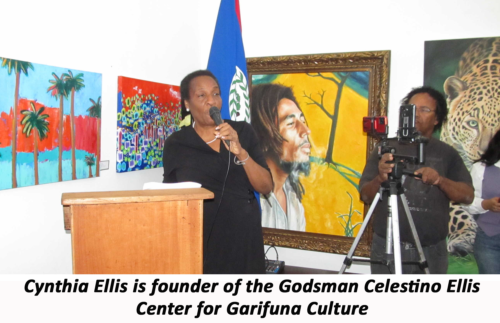
Dr. Anabel Ford has also been previously awarded with the Fulbright award and the Rolex Award (for her initiative to protect cultural heritage), and was recognized by the United States Senate as Educator of the Year.
“It’s been an honor working with the team from Dr. Anabel Ford. We have learned much, it has been fantastic, valuable work. I have been enjoying the time working with them by meeting a lot of new friends from the archaeological team,” said Dr. Narcisso Torres from Santa Familia Village, who has been working with Dr. Anabel Ford as a forest gardener for the past 40 years.
Dr. Anabel Ford is an American archaeologist specializing in the study of Mesoamerica, with a focus on the lowland Maya of Belize and Guatemala. She is recognized for her discovery of the ancient Maya city, El Pilar. Ford is currently affiliated with the Institute of Social, Behavioral and Economic Research (ISBER) and is the director of the Mesoamerican Research Center (MARC) at the University of California, Santa Barbara. She has a Ph.D. in Anthropology and works as a research archaeologist. Dr. Ford is the president of Exploring Solutions Past—The Maya Forest Alliance.
Dr. Anabel Ford first encountered the ancient Maya settlement of El Pilar, which straddles the border between Guatemala and Belize, in 1983, and she has been working at the site ever since. Her work demonstrates how the Maya were able to prosper over millennia by developing distinctly local relationships to their tropical environment, which she calls the Maya forest garden. Her work was initiated with the permission of Belize’s Department of Archaeology and its then Commissioner, Jaime Awe.
El Pilar is an ancient Maya city center located on the Belize-Guatemala border, approximately 12 kilometers (7.5 miles) north of San Ignacio, Belize. The site can be accessed through San Ignacio and Bullet Tree Falls on the Belize River. The name “El Pilar” is Spanish for “watering basin,” reflecting the abundance of streams around the site and below its escarpment, which is rare in the Maya area. The monuments of El Pilar are at the center of a 5,000-acre (2,000 ha) protected area known as El Pilar Archeological Reserve for Maya Flora and Fauna, declared a cultural monument in both Belize and Guatemala in 1998.
The El Pilar site was occupied from 800 BC to 1000 AD and, at one time, had over 20,000 residents. El Pilar is one of Belize’s largest Classic period Maya sites and has a well-defined ceremonial section that includes both private and public areas. The site covers approximately 75 acres and has over 15 plazas, a ball court, and hundreds of multi-purpose buildings. The El Pilar Archeological Reserve for Maya Flora and Fauna is open to the public and has a series of trails providing access throughout the site. (Along the trails there are suitable resting places.)
El Pilar is the largest center in the Belize River area, more than three times the size of other well-known centers such as Baking Pot or Xunantunich. The center of El Pilar is divided into three primary sectors: Xaman (North) Pilar, Nohol (South) Pilar, and Pilar Poniente (West).
The eastern and western sections are connected by an offset causeway system extending between two large public plazas, one in Belize and the other in Guatemala. Surveys and excavations have been concentrated in the eastern side of El Pilar within Belize. The western section, Pilar Poniente, is across the border in the Republic of Guatemala, where the main stern temple has been consolidated for view. The divided location of El Pilar held great potential for Belize and Guatemala, two countries that have a history of border disputes. Today, El Pilar is unique in existing as the only binationally managed archaeological reserve and a platform for discussion and collaboration between the two countries.
“The process to introduce and build the concept of a peace park was initiated in 1995 with a consortium of leaders in Belize and Guatemala. This began with local meetings and built towards the Mesa Redonda El Pilar process that opened in 1997 in Mexico City”, explained Dr. Anabel Ford.
Dr. Anabel Ford also informed that “the binational boundaries of a protected area that embrace the ancient city of El Pilar has been established in Belize and Guatemala. This is the conceptual Peace Park. We have had meetings and interactions that have focused on the binational component.”
Theoretical frameworks for understanding the “Maya Collapse” – which have incorporated data from advanced scientific techniques in recent years – envision Maya societies becoming increasingly vulnerable to climate change, as their environment was degraded and deforested by growing populations and unsustainable agricultural practices. The robust archaeological record and long-enduring Indigenous understandings of forest ecology and food production, however, suggest different interpretations that warrant exploration.
Dr. Anabel Ford told Amandala that “there is no Maya Collapse; the Maya people continued to practice their Maya Forest Garden … the neglect of the Mayan monuments was what we think that caused the collapse.”
Ford has recently incorporated the new technology of LIDAR to her survey work. LIDAR, which stands for Light Detection and Ranging, is a remote sensing method that uses light in the form of a pulsed laser to measure ranges (variable distances) to the Earth. It is a method for determining ranges by targeting an object with a laser and measuring the time for the reflected light to return to the receiver. Research in Belize and Guatemala continues with citizen scientists and community partners documenting ancient settlements and vegetation with the aid of this cutting-edge LIDAR technology.
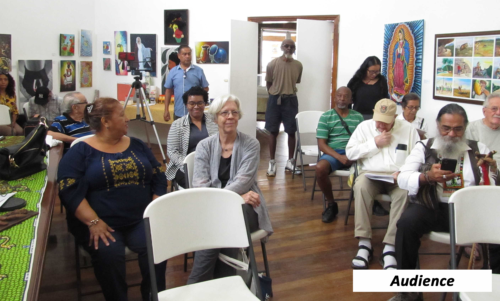
Her sensitive and unique anthropological and archaeological vision, reflected in the development of her remarkable transdisciplinary project, integrated by specialists from archaeology, botany, geography, and soil science, among other sciences, represents a break with the hypothesis that the Mayas caused their civilization’s decline as a result of overpopulation and environmental degradation. Dr. Ford stated that the Maya achieved a successful balance with their environment, and that their skills, methods, and techniques should be applied today.
El Pilar and Forest Gardens are now celebrated at San Ignacio’s Cayo Welcome Center, practiced at the active outfield Chak Ha Col Forest Garden in Santa Familia, and taught at the rural Känan K’aax School Garden in Santa Familia as well.
Another high-profile scholar is Dr. Joseph Palacio, who is a Belizean anthropologist who was born in Barranco in the south of Belize. He was the first Belizean Garifuna to complete a doctorate degree in anthropology and is a leading promoter of Garifuna language, history, and culture. He attended secondary school in Belize City before continuing his education at the University of Toronto, and the University of Manitoba at Winnipeg, and earned a Ph.D. in Anthropology from the University of California-Berkeley in 1982. Dr. Palacio served as Belize’s Archaeological Commissioner from 1971 to 1976, and was instrumental during that period in developing legislation relating to the excavation and preservation of Belizean archeological sites. He then joined the faculty at the University of the West Indies, where he taught indigenous history and community development alongside founding the first formal Garifuna language training program. Dr. Palacio has written many monographs and academic articles, including a collection of essays titled, “The Garifuna: A Nation Across Borders”.
In his colorful journey, Dr. Palacio’s primary training is in archaeology and he served as Belize’s first native archaeological commissioner, working in the Maya sites of Nim Li Punit in Toledo, Xunantunich in Cayo, and Cerros in Corozal, and helping establish the first structures to protect Belizean artifacts from being looted and robbed. He has published a three-volume series titled, “The Practicing Anthropologist,” representing his life’s work that began in Barranco, Toledo District; continued in Toronto, Ontario, Canada; and peaked in California, but ultimately led back home. The three volumes presented represent scholarly essays on Belize which are the result of primary research. The first, entitled, “Building a Nation”, contains essays on anthropology in nation-building, migration, and social and community development. The second volume is entitled “Cultural Diversity and Caribbean Indigenous Peoples”; and volume three is “Garifuna Peoplehood and Barranco”, which contains essays on Garifuna history, food, social structure, spirituality, culture, and land.
The Godsman Celestino Ellis Center for Garifuna Culture Inc. is a virtual initiative aimed at preserving and promoting the Garifuna culture. Launched in honor of the late Godsman Celestino Ellis, the center serves as a resource hub for entrepreneurial development and youth enhancement. It continues Ellis’s legacy of innovation and mentorship. The center will have a physical representation in San Ignacio and plans to launch a series of activities in the following year. Information on the GCE-CFGC Center can be accessed at www.gcecfgc.com

